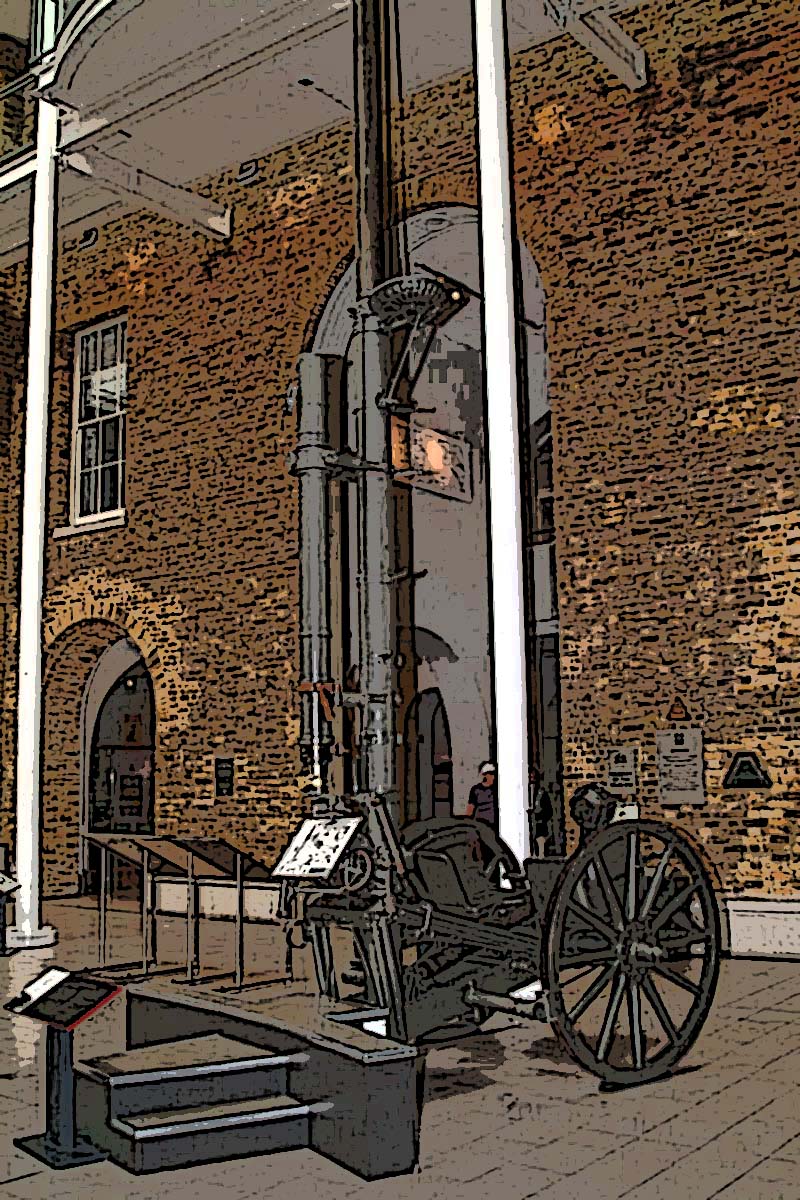


Mât Périscope Télescopique Allemand (Londres IWM )
English translation
 |
C’est un instrument optique utilisé au combat sur terre et en navigation sous-marine, permettant à un observateur de voir dans toutes les directions tout en restant à couvert ou en plongé
Les premiers appareils contenant des miroirs réfléchissants pour observer l'ennemi à couvert ont été brevetées au cours de la guerre de Crimée de 1854 1856 En effet un dispositif a été breveté, qui ne diffère guère du périscope miroir de la Première Guerre mondiale.
Dès le début du 20e siècle, la montée en puissance de l arme sous-marine entraîne le développement de nouveaux périscopes complexe de grande longueur et équipé d'un système optique de lentilles construits pour le sous-marin. Dans le même temps, sur terre, les nouvelles nécessités imposées à l'artillerie de campagne par l'utilisation croissante des positions camouflées conduit à l'élaboration télescopes et d’appareils de vues panoramique, pour ces engins le système optique intégré dans le tube du télescope verticale avec les optiques et les systèmes oculaire
Durant la 1e guerre mondiale, divers instruments optiques de ce type ont été élaborés et améliorés, et ce périscope fut mis en service pour l'infanterie de forteresse au début
Construit en grandes quantités, il est vite devenu un élément essentiel pour l’infanterie, ainsi que l'artillerie mais à l'utilisation on s’aperçut que ce périscopes était moins efficace que les avions équipé de caméras pour la collecte d'informations mais comme ils sont mobiles et facile à dissimuler, ils ont des avantages par rapport aux ballons d’'observation
La forme la plus simple du périscope, généralement utilisé par la troupe, consistait en un tube de section rectangulaire, muni de deux miroirs, dont le dessus, incliné à un angle de 45 ° par rapport à l'axe du tube, reflétant l'image de premier plan verticalement vers le bas à un second miroir, également inclinée sur l'axe à 45 °
Mais afin d'obtenir un champ suffisant de vue, les miroirs, et donc la boîte, sont assez grands, tout en étant peu visible de l ennemi Aussi un système de loupe et de grossissement a été mis au point.
Son extrémité inférieure pour le Périscope portable est équipée d'un pour être planté au sol ou sur le parapet d’une tranchée.
Durant la 1ère Guerre Mondiale l'Allemagne a produit un périscope spécial d'une hauteur considérable à utiliser derrière les maisons ou dans les bois
Ce mât date de 1917 et a servi sur le front de l'Ouest jusqu’à la fin de la guerre
Il pouvait t être utilisé pour une utilisation avec un obstacle d’un hauteur entre entre 9 et 24 mètres
Le mât contient huit tubes qui peut être relevé ou abaissé par un câble attaché à un treuil
Lorsqu'il est utilisé opérationnellement le mât a été stabilisé par des vérins
Tous les belligérants ont aussi utilisés ce type d’engins
Caractéristiques techniques
Poids 1,3 tonnes
Hauteur maxi 25 m
German Mast periscope London IWM
 |
It is an optical instrument used in land warfare and in submarine navigation, enabling an observer to see in all directions while remaining under cover or submerged
The first devices containing reflecting mirrors to observe enemy from cover were patented during the Crimean War of 1854 1856 which scarcely differs from the simple mirror periscope of the World War. From the beginning of the 20th century, however, the practical introduction of submarine navigation brought about the development of new elaborate periscopes of great length and provided with an optical system of lenses, which were built into the structure of the submarine. At the same time, on land, the new necessities imposed on field artillery by the growing use of covered positions led to the development of scissors-telescopes and panorama-telescopic sights, in which the optical system was arranged with the tube of the telescope vertical and the object-glass and eyepiece systems at right angles to the axis of the tube.
And in the World War, while optical instruments of this kind were elaborated and improved, the periscope as such came into use for the infantry garrisoning trenches. Manufactured in large quantities it soon became an essential part of infantry as well as of artillery and machine-gun equipment but quickly whe found twhat this periscopes was not widespread as they were less effective for information gathering aeroplanes equipped with cameras nut being mobile and easy to conceal they has advantages over observation balloons
The simplest form of periscope, and that most generally used by troops, consisted of a tube, rectangular in section, provided with two mirrors, the upper of which, inclined at an angle of 45° to the axis of the tube, reflected the image of the foreground vertically downwards to a second mirror, also inclined to the axis at 45° into which the observer looked
But in order to obtain an adequate field of view, the mirrors, and therefore the box, had to be made somewhat large, and in the close-quarters conditions of trench warfare even the few inches by which they projected over the parapet or ether cover made them sufficiently obvious to draw fire
Less conspicuous periscopes were therefore designed, and these, in order to take in enough of the foreground, had to be provided with a magnifying as well as a reflecting system.
By the WW1 the German had produced a special periscopes of considerable height to use behind houses or in the woods
This mast dates from 1917 served in the Western front toward the end of the war
It could be used to use over obstacle between 9 to 24 meter
the mast contains eight tubes which can be raised or lowered by a cable attached to a winch
When used operationally the mast was steadied by 3 guy rapes
All the WW1 belligerents have used this device.
Technical data
Weight 1.3 Tons
Height 25 m max